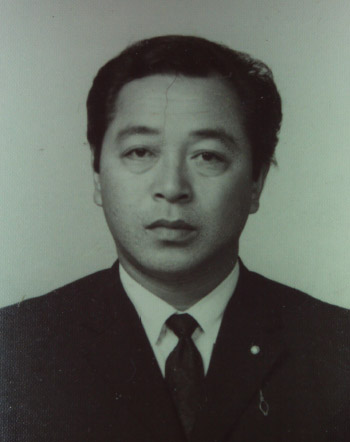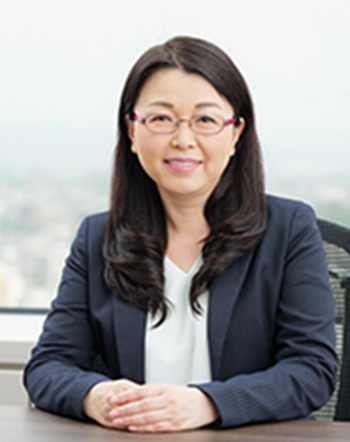1984
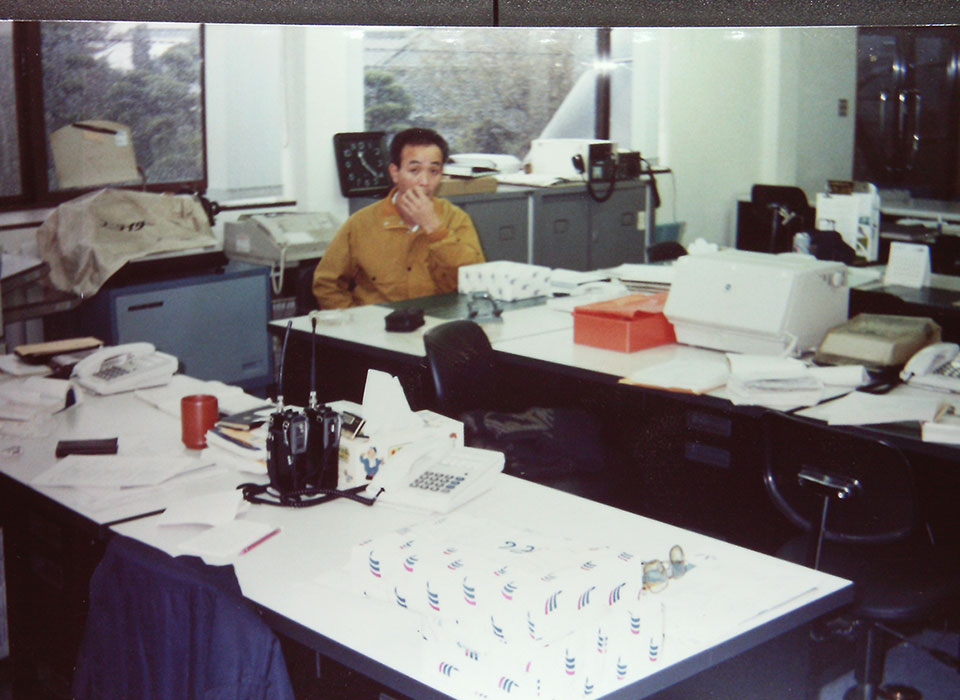
- When our founder passed away, Katsuhiro Kumagai became our second President and Representative Director.
-
KOJIMA SEISO had been steadily building a track record of success,and was about to grow even more. In August 1984, our founder, Tadahira Kumagai, suddenly died of liver cancer. He was 55 years old.
His eldest son, Katsuhiro Kumagai, became the second President and Representative Director at the age of 26. In September 1987, Tadahira's second son, Hiroyuki Kumagai, assumed the position of senior managing director at the age of 24. Additionally, Tadahira's eldest daughter, Yukiko Takahashi, resigned from the company she had been working for to join KOJIMA SEISO as a Director.
It wasn't easy to start moving forward again. Not only did a veteran sales employee suddenly quit the company, but he also took his clients with him and moved to another company in the waste management industry. Despite these crises, Katsuhiro and Hiroyuki were able to move forward because their clients trusted in KOJIMA SEISO and entrusted them with their business as before. Most importantly, the two brothers had the support of our drivers, who were willing to work together to overcome the difficulties.
1986

- Establishment of a waste liquid treatment facility
-
After restarting under a new system, KOJIMA SEISO focused on sales and marketing, and also set its sights on treating waste liquid. In May 1986, a new waste liquid treatment facility was built at the head office business office. Its treatment capacity was only about 10 tons/day, but at the time it was sufficient.
Later, the fact that there were few waste liquid treatment companies in the market proved to be a tailwind, and, as the number of requests for waste liquid treatment increased, the facility's treatment capacity could no longer keep up. Therefore, in 1988, the waste liquid treatment facility was renovated and its capacity was increased to 50 tons/day. At the same time, we increased our number of 10-ton dump trucks and other vehicles to improve our system and increase our share of the waste liquid treatment market.
1988
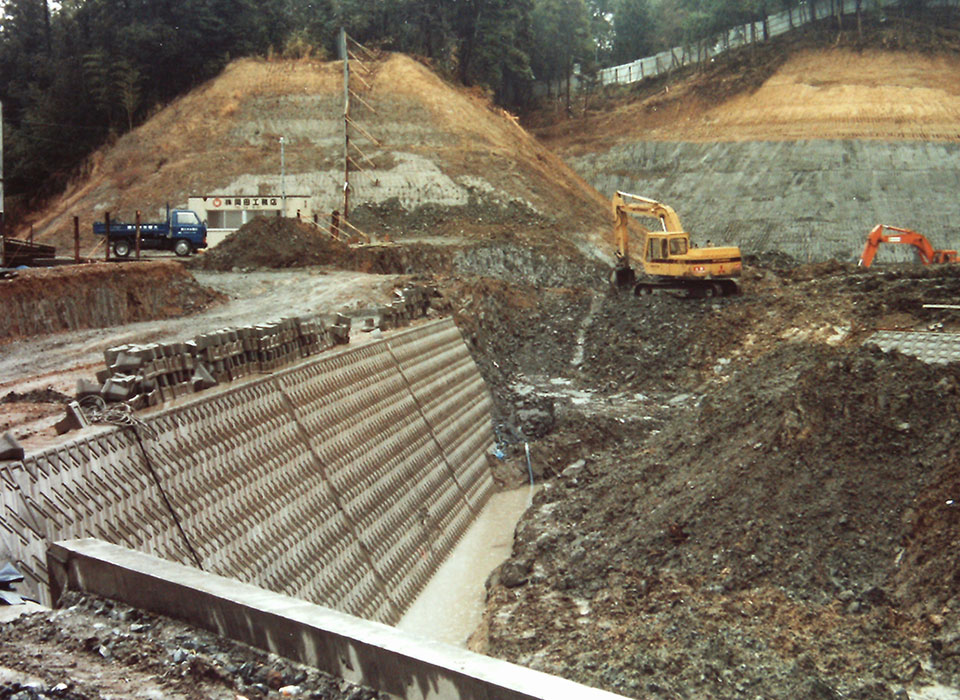
- Completion of a long-desired controlled landfill and construction of a new crushing facility
-
In April 1988, the Kurematsu Business Office, a controlled landfill site final treatment facility, which we had continually needed since the transition to leadership under Katsuhiro and Hiroyuki, was completed. The total investment for the site was over ¥600 million, which was a large investment considering the scale of KOJIMA SEISO's sales at the time.
The Kurematsu Business Office was one of the most valuable disposal sites in Japan for cinders, sludge, waste paper, wood chips, fiber waste, plant and animal residues, and other materials, as well as for the disposal of specified hazardous waste asbestos, which has strict disposal standards.
Also in 1988, we not only established a controlled landfill site, but we also obtained a license for intermediate processing of waste plastics and other materials,and built a new crushing facility in close proximity to the controlled landfill. In doing so, KOJIMA SEISO became the unrivaled waste disposal company in Hamamatsu City.
1991
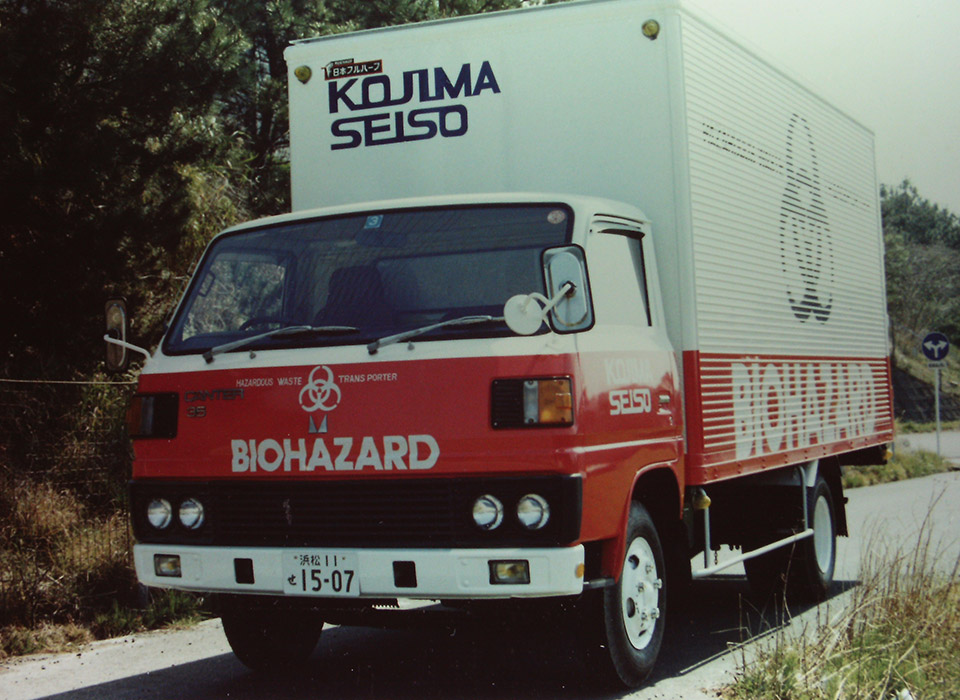
- Dealing with infectious waste
-
In 1991, the Waste Management and Public Cleansing Law was revised, requiring waste disposal companies to dispose of waste more appropriately. Meanwhile, the introduction of a system for specially controlled waste created a new market for the disposal of specially controlled waste.
Aiming to capture a share of the specially controlled waste market, KOJIMA SEISO decided to first move to win orders for the treatment of infectious waste generated by hospitals, clinics, and other medical institutions with which it already had a strong connection. After gathering all of the necessary knowledge and information and going around the market, we were able to take on an almost exclusive contract for the treatment of infectious waste from medical institutions in Hamamatsu City.
October 1992 to August 1995

- Expansion of proprietary intermediate treatment facilities
-
We focused on developing the market for specially controlled waste, and at the same time, expanded the intermediate treatment facility at the head office business office site to properly dispose of industrial waste, including specially controlled waste, in accordance with the law. In October 1992 we installed a facility for dehydration, oil-water separation and neutralization. Then, in September 1993 we installed a sun-drying facility, followed by a dry distillation facility in April 1994. In addition to these facilities, in August 1995, we also installed a coagulation/sedimentation facility and an activated sludge facility.
None of the intermediate treatment facilities installed by KOJIMA SEISO during this time were existing facilities that were already in use by other companies in the industry. They were all built independently in accordance with legal standards and with the company's own know-how. The fact that we had a number of our own intermediate treatment facilities licensed by the local government was a major advantage that differentiated us from our competitors.
1995
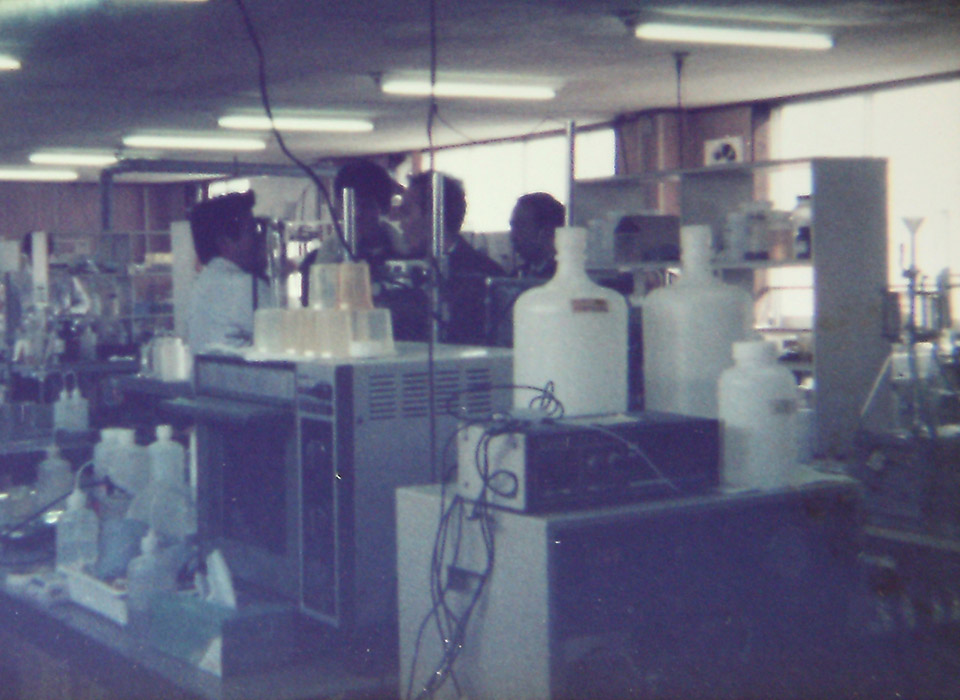
- The analysis room in 1995
-
After establishing a controlled landfill site, expanding our intermediate treatment facilities, and promoting the treatment of more specially controlled waste, KOJIMA SEISO's annual sales exceeded ¥1.2 billion in the mid-90s. By this time, our number of employees had grown to nearly 60, and our two-story head office had become too small. As such, in April 1995, the head office was expanded to a four-story building.
We had also begun handling hazardous materials, so we established a new analysis center to perform in-house analysis and measurement of industrial waste, which we had previously outsourced to an external contractor. This analysis center was later spun off as MIDAC ANALYSIS CENTER CO., LTD.

